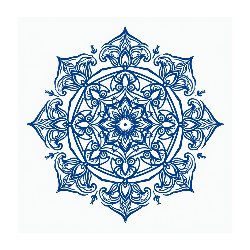
Forget Product-Market Fit – Here’s What Early-Stage Startups Should Really Chase
The Startup Myth Everyone Believes
If you’ve spent any time around investors, accelerators, or startup Twitter, you’ve probably heard the same advice over and over again:
“You just need to find product-market fit.”
It’s treated like a holy grail — that magical moment when your product perfectly aligns with what customers want, and growth takes off on its own. Founders chase it endlessly, pitch decks worship it, and entire strategies are built around it.
But here’s the truth we’ve seen first-hand working with early-stage founders at Product Siddha: product-market fit isn’t real in the way people think it is.
Markets evolve, customers change, and what feels like “fit” today may completely fall apart in six months. Instead of chasing an illusion, smart startups focus on something more practical and powerful – continuous validation and learning.
Why Product-Market Fit Misleads Founders
For early-stage startups, the concept of “fit” assumes that both your product and your market are stable enough to align perfectly. But in reality, everything is in motion.
Your customers are still figuring out what they need. You’re still refining what you’re building. And competitors are constantly shifting the landscape.
When founders chase a static idea of “fit,” they often fall into these traps:
- Waiting too long for “perfect validation” before launching.
- Overbuilding features that customers never asked for.
- Mistaking early enthusiasm for sustainable traction.
- Treating feedback as a finish line instead of a compass.
We’ve seen early teams spend months (sometimes years) perfecting an MVP they never actually test with real users – because they’re waiting to “find fit.” What they should be doing is testing faster, learning faster, and adapting faster.
What Actually Drives Startup Success
The startups that grow successfully aren’t the ones that “found” fit – they’re the ones that learn faster than everyone else.
They don’t treat product-market fit as a milestone. They treat it as a moving target and build systems to adjust continuously.
At Product Siddha, we help founders build MVPs that are designed for validation velocity, not just launch speed. That means:
- Getting early users involved before the full product exists.
- Measuring real behavior, not just survey opinions.
- Iterating weekly based on what data and conversations reveal.
If you can shorten your learning loop, you can outpace competitors who are still waiting for validation.
The Continuous Validation Framework
Instead of chasing product-market fit, we help startups build around three principles that create ongoing alignment with customers and markets:
- Customer Intimacy — deeply understanding your users’ behavior and context.
- Rapid Experimentation — testing small ideas fast to learn what works.
- Honest Measurement — tracking metrics that actually matter, not vanity ones.
Let’s unpack each one.
1. Customer Intimacy: Stop Guessing, Start Observing
Most early-stage teams think they understand their users because they ran a few interviews. But interviews only show what customers say they do, not what they actually do.
Customer intimacy means spending real time watching how users interact with your MVP, even if it’s just a prototype, a Figma mockup, or a landing page test.
At Product Siddha, we encourage founders to spend at least 30% of their time each week in direct contact with users.
Example weekly breakdown:
| Activity | Time (hrs/week) | Purpose |
|---|---|---|
| Observe users in real workflows | 4 | Identify friction and unmet needs |
| Review product usage data | 3 | Spot hidden behavior trends |
| Conduct customer calls | 3 | Hear the language of their pain points |
| Reflect & plan experiments | 2 | Turn observations into testable ideas |
Success indicators:
- Product decisions reference specific customer stories.
- You can clearly describe your users’ day-to-day behavior.
- You adjust features based on what people actually do, not what they say.
2. Rapid Experimentation: Learn Fast, Fail Small
Startups often think validation requires big product launches. In reality, it’s about running small, controlled experiments that give you real insights without wasting resources.
Here’s a simple cycle we use with founders:
| Week | Step | What You Do |
|---|---|---|
| 1 | Form Hypothesis | “If we add X feature, engagement will increase.” |
| 1 | Design Mini-Test | Create a quick MVP, landing page, or clickable demo. |
| 2 | Launch to Small Group | Get 10–20 real users to interact. |
| 2 | Measure & Analyze | Collect both qualitative and quantitative feedback. |
| 2 | Decide & Iterate | Keep, pivot, or discard based on data. |
Target: Run 8–12 micro-experiments per month.
Goal: Validate or kill 3–4 key assumptions before scaling.
The faster you run this loop, the faster your product evolves toward real traction.
3. Honest Measurement: The Metrics That Actually Matter
Many founders love dashboards full of signups and traffic charts, but those don’t tell you whether your product truly delivers value.
Real validation comes from retention and engagement, not acquisition.
Here’s how we advise startups to measure progress:
| Metric | Why It Matters | What to Track |
|---|---|---|
| Retention | Are users coming back? | 7-day, 30-day, 90-day active usage |
| Activation | Are users reaching their “aha” moment? | % of users completing core action |
| Expansion | Are customers deepening engagement? | Frequency of use, upsells, referrals |
| Feedback Loops | Are you learning from users? | # of actionable insights per week |
It’s not about “how many” people signed up – it’s about how many stuck around because they found real value.
Why This Shift Matters for Early-Stage Startups
The old “product-market fit” mindset made sense when markets moved slowly. Today, user expectations change weekly. Competitors launch in months. New AI tools appear overnight.
Waiting to “find fit” is like waiting for still water in a storm.
Founders who focus on continuous learning instead of perfect fit:
- Ship faster.
- Adapt faster.
- Build products people genuinely want, because they keep listening.
At Product Siddha, we’ve seen startups that work this way:
- Pivot earlier before burning through their runway.
- Discover surprising use cases through real observation.
- Raise funding faster because their insights are grounded in data, not theory.
Mindset Comparison: Old vs. New
| Category | Product-Market Fit Mindset | Continuous Validation Mindset |
|---|---|---|
| Goal | Find the “perfect” fit | Keep improving alignment |
| Launch Philosophy | Wait until ready | Ship small, learn fast |
| Customer Interaction | Occasional interviews | Weekly observation |
| Learning Speed | Slow (months) | Fast (days or weeks) |
| Key Metrics | Acquisition and vanity KPIs | Retention and engagement |
| Adaptability | Reactive | Proactive |
| Success Indicator | “We found fit!” | “We’re learning faster than before.” |
Building the Capability as a Founder
Making this shift isn’t just about process, it’s about mindset.
Early founders often juggle fundraising, marketing, and product at once. But the one non-negotiable task that drives everything else is learning from users.
Here’s what to prioritize:
- Block time weekly for direct customer contact.
- Track learnings in a shared doc or Notion board, not just metrics.
- Celebrate learnings, not launches. Reward the insights that lead to better next steps.
- Train your team to think in hypotheses and outcomes, not just features.
At Product Siddha, we don’t just build MVPs, we build learning systems for founders. Every MVP we design is meant to test assumptions, collect feedback, and help teams make confident next moves.
The Takeaway
Product-market fit isn’t a single moment you discover, it’s a capability you build.
The most successful founders don’t find perfect alignment once and stop. They build products that stay aligned through continuous discovery, fast experimentation, and honest measurement.
So the real question isn’t:
“Have we found product-market fit?”
It’s:
“Are we learning from our customers faster than our competitors?”
Suppose the answer is yes – congratulations. You’re already ahead.
Product Siddha helps early-stage startups build MVPs designed for rapid validation, not endless iteration.
Want to turn your product idea into something users actually love?
Visit Product Siddha or reach out to our team to start building your learning-ready MVP today.
